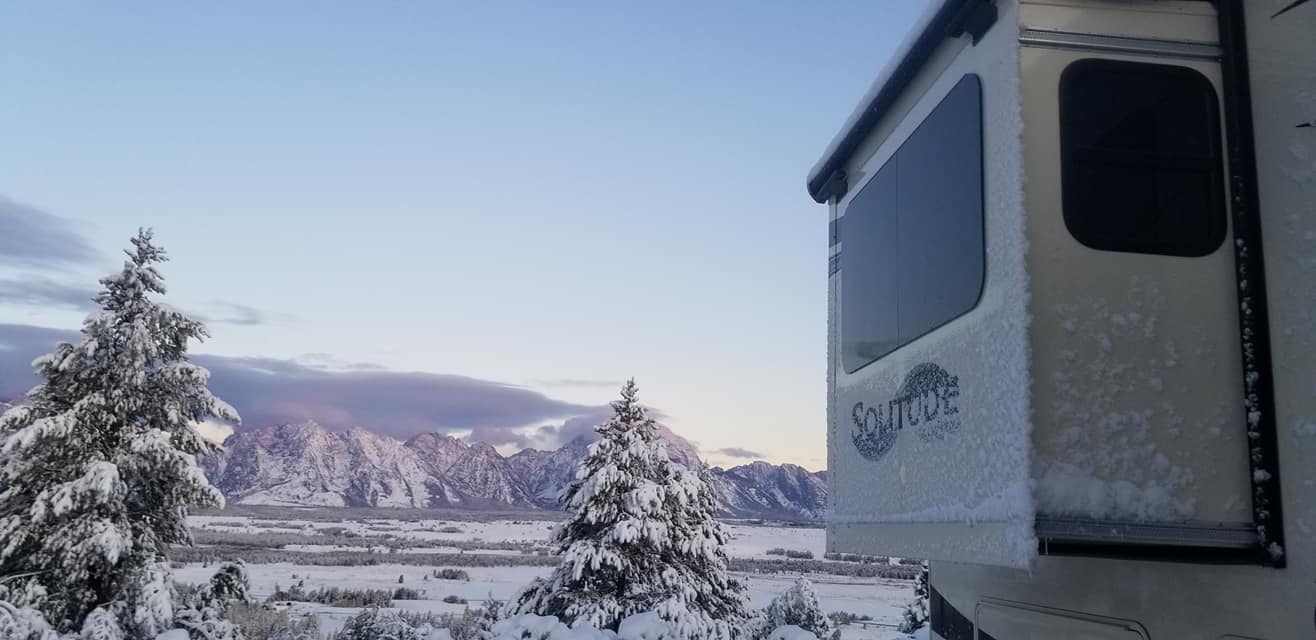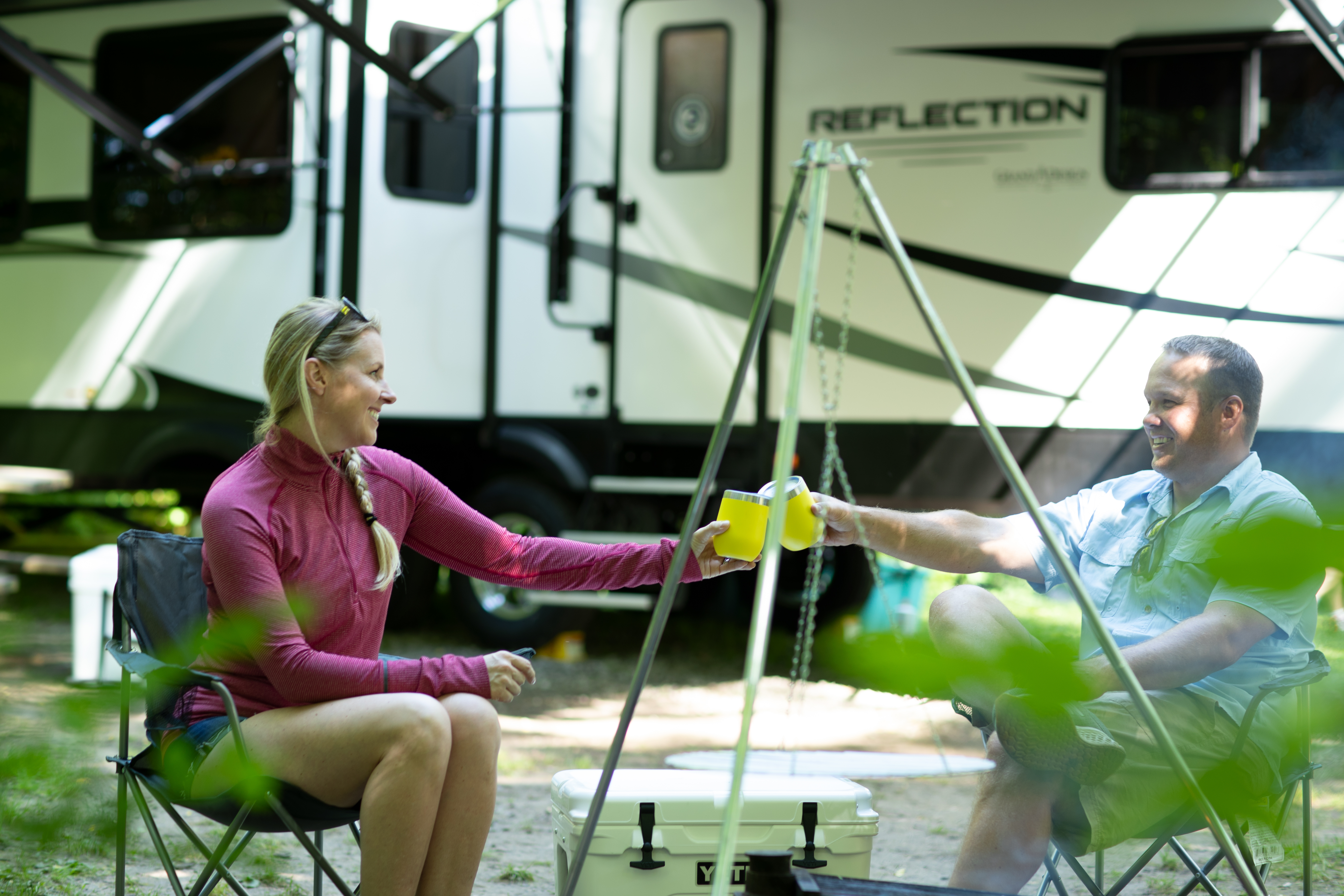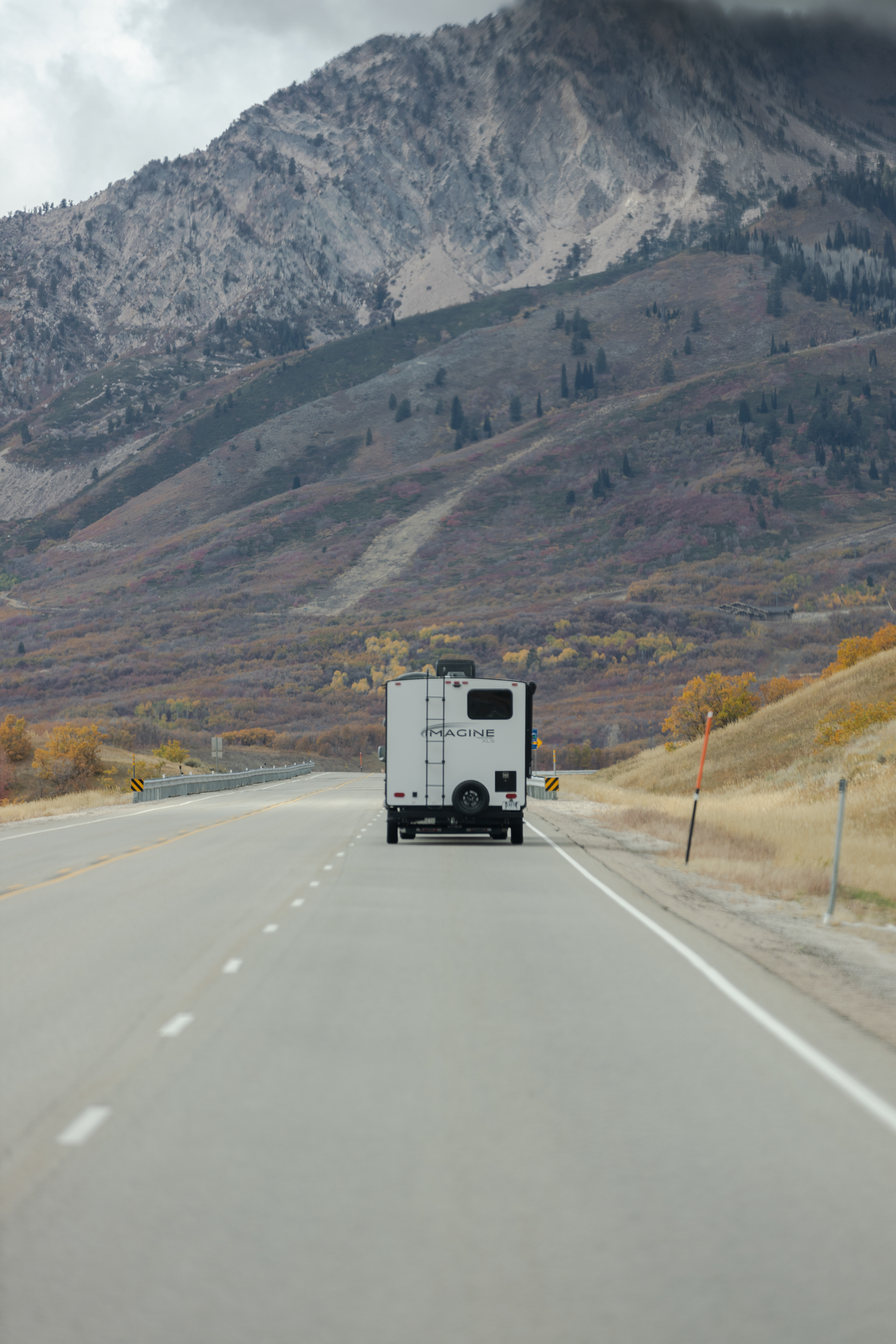LEARN
How to Prep Your RV for Spring

The best time of year for RVing is finally approaching. Soon, you will be parked out in the spectacular wild corners of the United States with your family, your spouse, or maybe on your own. However you plan to travel, springtime will be here before you know it. Have you prepared your RV for camping season?
Unfortunately, you can’t just drive off with your RV into the sunset. There are six major things you should do before you hit the road.
1. Look at your tires
You may be thinking, “Why do I need to check my tires? They were fine last year.” Surprisingly, tires can take on a lot of wear and tear just from sitting there, including weather damage. They can also lose a significant amount of air pressure during the winter months.
So, first things first, you should look at your tires for any cracks in the sidewalls, worn down treads, or other vulnerabilities. If you encounter any issues don’t risk getting by for another season. Invest in some new tires for your RV to make sure your home away from home is road ready.
Next, check your tires (including the spare) with a tire pressure gauge and reinflate your tires until they reach a safe standard. If you aren’t sure what that standard is, check the tire pressure sticker on the off-door side of your camper. Do this several days before your trip and then check them again the day before you leave. If your tire pressure has dropped at all, you may have a leak that you need to address. Skipping this step could result in a blowout, poor handling, and possibly even an accident.
2. Prepare the water system
This step is basically undoing the things you did to winterize your RV last year. If you recall, in the fall, you should have filled your water system with nontoxic RV antifreeze to prevent the pipes from freezing. In the spring, you must flush all of the antifreeze out of your plumbing system so you have safe, clean water to use on your next adventure.
After flushing your water system, you may need to sanitize it with bleach if you did not sanitize the system before winterizing. To do this, use 1/4 cup of household bleach and one gallon of water. Make a gallon of this solution for every 15 gallons of holding-tank capacity. Deposit the solution into your freshwater tank. Fill the rest of the tank with water, turn on the water pump, and open the all the faucets. Run until there is a bleach-like odor, then close the faucets and let sit for 3 hours. After allowing the bleach solution to sit for an appropriate amount of time, drain all of the water from the system, refill with potable water, and flush the system, draining it once more. Run the water until it no longer has an odor.
During this process you should also check your plumbing system for leaky pipes. Run your pump with water in the tank, listening for short-cycling. Inspect your pipe system under sinks and around the toilet. Checking for leaks will help prevent your RV from getting costly water damage.
Before you begin this step, please refer to your battery manufacturer instructions. Also, note that the instructions below only apply to lead-acid batteries.
Each month your RV is in storage, your battery will lose a little bit of charge. Ideally, you will charge your battery periodically during the off-season to extend the lifespan of your battery, but if you haven’t done that, don’t worry.
Using a voltmeter, check the charge on your battery. If it is fully charged, it should be at about 12.9 volts. In the event that it is below this voltage, you may want to recharge your battery.
After charging the battery, check the water level inside the battery. If it is low, add distilled water until it reaches the right level.
4. Inspect the propane system
The last thing you want to deal with when you are using your RV is a propane leak. The results could be catastrophic. For this reason, it is critical that you inspect the propane system.
To do this, turn off your propane appliances and connect your battery. This will ensure that your hard-wired LP detector runs. To test this, press and hold the 'TEST' button on the LP detector itself. It should emit a loud beeping sound. If not, have your LP detector serviced before utilizing the LP system.
Next, open the propane tank valves. A leak detector will emit an audible alarm if a propane leak is detected. Additionally, if you apply soapy water using a spray bottle to the valves and fittings, and the crimping on the propane regulator, they will bubble if there are any leaks. All leaks should be fixed before taking out your RV.
If your RV uses refillable propane cylinders, check their expiration date. If any are expired, have them recertified by your propane provider before refilling.
Sitting during all off-season can affect the surface of your brakes. So, it is important to burnish your brakes before heading out on vacation.
To do this, make approximately 20 to 30 complete stops from 30-mph, as well as slow-downs from 50-mph (applying light to medium pedal pressure). Be sure to allow 30 seconds of cool-down between each brake application. Refrain from making abrupt stops.
These steps will determine whether you are having any brake issues beforehand in addition to improving your overall brake performance.
6. Survey the exterior
Lastly, you should survey the exterior of your RV, paying special attention to all seals on the roof and sidewalls of your camper. Remove any covers you may have put on your RV when you winterized in the fall. Thoroughly check for damage caused by falling tree limbs during the winter, rodent entry, or other damage that may be particular to your storage area.
Observe the exterior components of your RV such as seals on windows and doors, side vents, light covers, turn signals, etc.
Consider "camping" at your residence for a day or two in order to catch any faults in equipment that may leave you stranded on your first journey.
And of course, before you go on your spring trip, make sure your license plates are current.
All that’s left is a little spring cleaning, and you are good to go. If you encounter any issues during your spring inspection that you are not comfortable fixing yourself, take your Grand Design RV to a local service center for repairs.
Happy travels!








